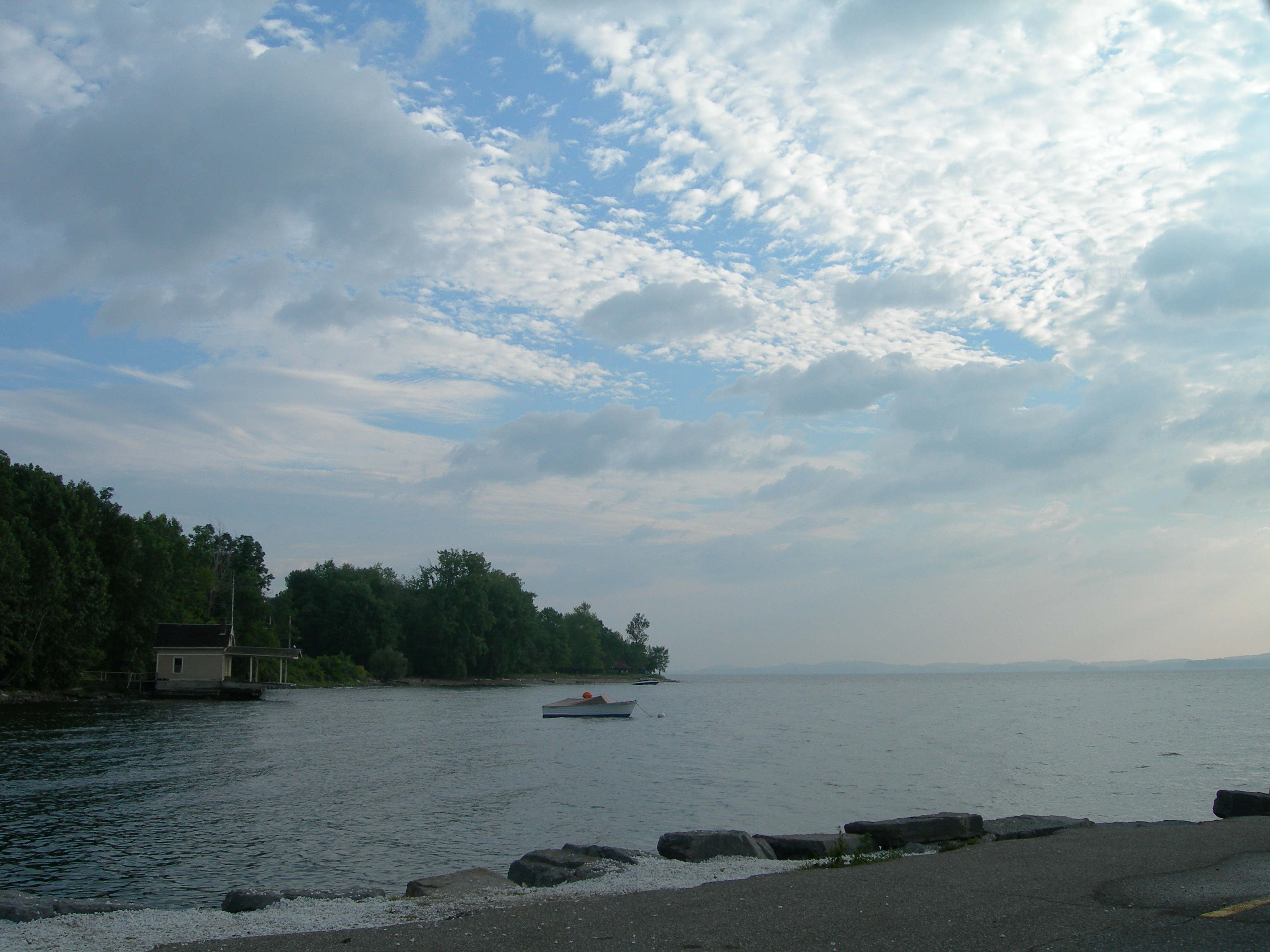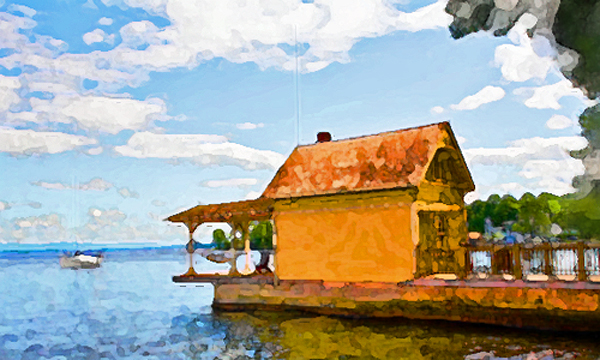
Today’s ferry ride from Charlotte to Essex — with snow falling on homecoming — tasted bittersweet if vaguely familiar. There was a wellspring of anticipation upon returning to inspect firsthand the team’s progress on the icehouse rehab, boathouse gangway, and some painting and tiling maintenance inside our home. There was also the poignant pique of a visit precipitated not by plan or passion but by infelicitous necessity.
The circumstances of my sojourn need no airing now since, perhaps, the “better part of valor is discretion“. So let’s skip the preamble and fast forward to the purely positive, right?
The cold, blustery ferry ride. The on-again, off-again frenzies of flurries pointillistic-pixelating the watery panorama, the approach to Essex, the desaturated vision of Rosslyn’s boathouse, the almost empty ferry queue, and the entirely empty roadway home.
Hhhmmm… Still shy of the purely positive, but hold tight. It’s coming.

Snow Falling on Cedar Shingles
That blue-gray veiled waterfront snapshot dates from a post I shared on January 16, 2014. Just over nine years ago. And the title, “Snow Falling on Cedar Shingles“, remanifested in muddled facsimile (snow falling on hemlocks…) as I pulled in the driveway, observing the row of new evergreens planted along the norther edge of the front yard last spring/summer. (Which reminds me, I’ve still not posted those updates. Best get on with it before the one-year anniversary!)
The photo bears a close similarity with today, and this drift of words struck me as uncanny, sort of the mirrored reflection of my sentiments upon arriving today.
A parting glimpse of the boathouse blurred beyond veil of soggy snowflakes. Southwestern sirens are calling me away — by ferry, airplane and rental jalopy — so I leave the homestead in the able care of my bride and my dog for a few days. I’m willing deep drifts of powdery snow upon my return! (Source: Snow Falling on Cedar Shingles)
And this, fair reader, is where the positive uptick begins.
Another whirlwind visit, but rather than a whirlwind away in Santa Fe, it was to be a whirlwind in Essex. I took note of that. Just shy of a decade; a not-so-subtle shift. And then there was that twin allusion to the recently re-roofed icehouse, long since silver-foxed, and to David Guterson’s novel which had moved me then but has slowly vanished like the ferry’s wake resolving back into the surface of the lake. And that transformation from cedars, actually American arborvitae (known locally as “cedars” or “white cedars”) to hemlocks resonated as well.
Snow Falling on Hemlocks
Remembering the micropoem with macropotence. Superpowers.
Dust of Snow
The way a crowShook down on meThe dust of snowFrom a hemlock treeHas given my heartA change of moodAnd saved some partOf a day I had rued.— Robert Frost (Source: Poetry Foundation)
There was no crow today to catalyze my “change of mood”. There were birds at the bird feeders beside the deck and beneath the leafless gingko tree. And several mallards retrieving fallen birdseed from the snow beneath the feeders. And the new row of hemlocks, similar to the old row of hemlocks on the other side of the property, looked green black beneath their frosted cloaks. But it wasn’t the songbirds, the mallards, or the hemlocks that “saved some part / Of a day I had rued.”

Snow Falling on the Icehouse
It was gathering with Tony and Peter and Steve inside the icehouse, taking in the awesome transformation from dirt floored shell of a utility building to micro mansion. A soaring one-room wonderland with a loft that thrills the 10-year old still overmuch alive in me. A barn loft with a handsome, homey stair rather than a ladder. A stout rebuild with an airy energy. An icehouse warm against the frosty afternoon despite the fact that no heat was running. A small scale sanctuary for writing and reading and creating the day away.
After meeting with the members of the team on hand I wandered, cold, and snow capping my hat and shoulders around and around, studying sightlines, editing hardscape and landscape plans, evolving furniture plans. After several months away, inspecting and and guiding and absorbing the progress from a digital distance that distorts the approximately 2,000 miles of reality jam-packed between me and the actual timbers and window openings and stair landing that have risen in the empty volume I left behind in September. Virtual reality is not reality. But walking and touching and rapping my knuckles and eyeballing alignments and sitting in a folding chair exactly where my desk chair will be several months from now,…
Snow Falling on Homecoming
This is the uptick. Where I felt tormented and conflicted in recent days, even as the ferry glided across the chilly lake, I now feel swollen with optimism. And underpinning the optimism is profound pride and gratitude for the work that has been completed and to the team who made this possible. Thank you Hroth, Pam, Tony, Eric, Matt, Brandon, Ben, Justin, Jarrett, Bob, Phil, Zack, David, Steve, Kevin, and everyone else I’m inadvertently overlooking. Your hard work and perseverance have begun to transform a vision into a building — an environment for creativity and productivity and entertainment — worthy of the handsome heritage that this historic property deserves. Susan and I are profoundly grateful to you all.
 Rosslyn Boathouse (Source: Geo Davis)[/caption]
Rosslyn Boathouse (Source: Geo Davis)[/caption]
































